The Eruption of Mount Vesuvius (79 CE)
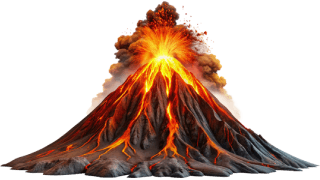
In 79 AD, Vesuvius violently erupted and destroyed Pompeii and Herculaneum. Pyroclastic flows consisting of ash, pumice, and toxic gases engulfed Pompeii with about 20 feet of debris, killing thousands instantaneously. The disaster ceased all daily activities, thereby preserving the city superbly and offering unique insights into Roman architecture, civics, and domestic life to modern archaeology. It lay bare the susceptibilities of dense urban settlements located near an active volcano and thus had consequences on emergency planning, urban design, and settlement patterns. On a political and cultural level, it became a metaphor for divine punishment and human helplessness. The eruption of Vesuvius turned into a focal event in urban planning, historical documentation, and the study of how natural hazards interact with society.
The Lisbon Earthquake of 1755
At around 9:30 am of November 1, while people were returning from mass, an immense tremor struck the city of Lisbon. Estimating a magnitude of about 8.5-9, it was followed by massive fires and a gigantic tsunami that claimed tens of thousands of lives. With the earthquake coming on All Saints' Day, it affected societal morale and religious interpretation for many years. The calamity sufficiently destabilized the Portuguese monarchy to set forth ambitious urban reconstruction, inclusive of earthquake-resistant architecture and administrative reforms. On a philosophical level, it challenged prevailing ideas of divine justice and deeply influenced Enlightenment thinkers such as Voltaire and Rousseau. Economically, the quake had disrupted transatlantic trade because Lisbon had been an important trade center. This catastrophe accelerated technological innovation, governance reforms, and deep reflection in society-the speed at which a single disaster can, on its own, transform landscapes, from both marks of physicality and intellectualism.
The 2004 Indian Ocean Tsunami
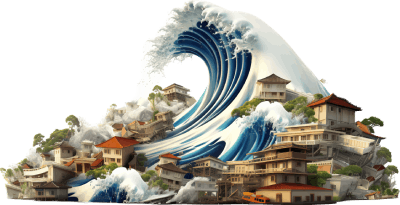
In 2004, an undersea earthquake of magnitude 9.1 jolted the Sumatra region. It struck at approximately 7:10 a.m. and several other countries across the Indian Ocean were also affected. It generated tsunami waves about 30 meters high and destroyed several coastal towns. Living through these events exposed anomalies in early warning systems and the disaster coordination mechanism on a regional scale. The great devastation witnessed showed the importance of working together internationally to facilitate tsunami detection, emergency planning, and rebuilding strategies. The coastal economies continued to be disturbed for a long time, which necessitated adjustment and recovery, particularly fisheries and tourism. Humanitarian efforts greatly increased awareness worldwide about vulnerability to disasters and influenced diversification of resilience programs and infrastructure investment. A warning to all tsunami survivors was that a single natural event could shake social arrangements, governance avenues, and international collaboration in managing disasters.
The 1906 San Francisco Earthquake
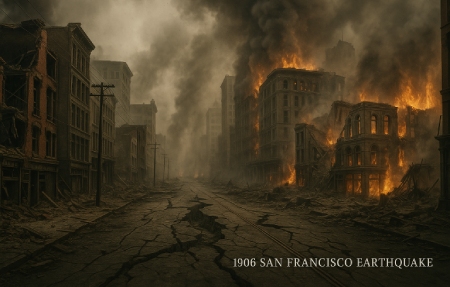
A magnitude 7.9 earthquake almost destroyed 80% of the city through tremors and ensuing fires, claiming 3,000 lives. It uncovered the weaknesses in urban planning, construction codes, and emergency preparedness within the fast-growing industrial cities. It went on to promote earthquake-resistant building designs and reorganized municipal governments around disaster response. The earthquake hindered normal financial activities of banks and trading markets. Consider the social aspects: it brought about accelerated migration and altered demographic compositions of cities. On the political side, federal and local relief coordination established precedent in emergency management. This event became the measuring unit for urban resilience, geological risk, and institutional capacity to respond to events of such magnitude on a natural scale.
The Eruption of Krakatoa, 1883
One of history's deadliest volcanic events was the eruption of Krakatoa in 1883 in the Sunda Strait. This explosion caused large tsunamis that killed over 36,000 people and destroyed coastal settlements. Ash into the atmosphere led to global climatic anomalies, temperature drops, and gorgeous sunsets worldwide. Economically, the eruption interrupted regional trade, thus affecting the colonial economy and the local economy. From a political perspective, and these eruptions have profoundly affected the administration of the Dutch colonies toward the observation and mitigation of disasters. Scientific records enhanced studies in volcanology, meteorology, and oceanography. Krakatoa depicts how a single geological event can affect the climate, trade, settlements, and scientific understanding all around the globe, thus pointing to the far-reaching effects of natural disasters.
The 1931 China Floods
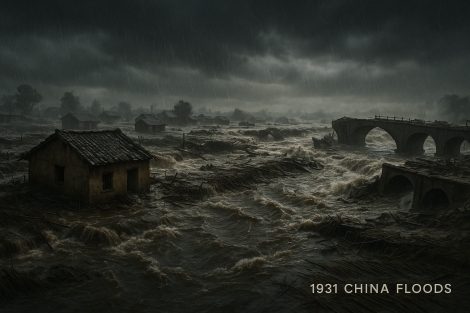
The 1931 floods along China’s Yangtze, Huai, and Yellow Rivers are the deadliest natural disasters in recorded human history, causing between two million and four million deaths. Excessive seasonal rainfall and snowmelt, paired with poorly maintained levees, combined to create an unprecedented inundation that destroyed houses and farms along with essential infrastructure. The disaster accelerated migration and aroused social unrest amidst the prevailing political instability. Relief and reconstruction demanded collaboration between provincial and national governments, giving rise to contemporary Chinese disaster management. Economically, it devastated agriculture and became an impetus to pursue flood control and land reclamation projects. The 1931 floods reveal how environmental catastrophes amplify political vulnerabilities and create long-term repercussions on national development and policy orientation.
The 1908 Messina Earthquake
The Messina earthquake occurred with a magnitude of 7.1, practically laying to waste Messina and other towns, and killing around 75,000 people. Many victims were trapped under buildings that had collapsed, thereby showing the susceptibility of ancient towns with antiquated construction. The very presence of the disaster ushered the Italian government to change the building code into a modern one and plan and organize civil defense systems. The aftermath saw international aid practicing new acts of cross-border disaster relief. The eventual long-term displacement of survivors also altered the urban demographics, reshaping patterns of reconstruction. In turn, engineering and architectural fields were changed with a subsequent focus on seismic-based design. The Messina earthquake is a textbook example of how a single act of nature can accelerate modernization in a natural setting, redefine urban planning, and change policy in a historically rich but fragile setting.
The 1815 Eruption of Mount Tambora
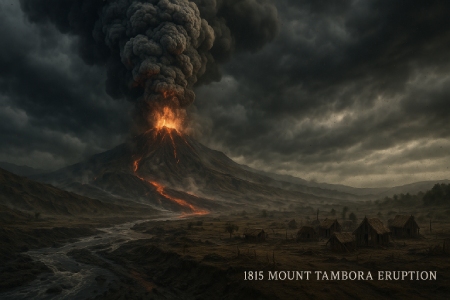
The 1815 eruption of Mount Tambora in Indonesia discharged about 160 cubic kilometers of volcanic material into the atmosphere, affording the famous "Year Without a Summer" in 1816. Temperatures fell worldwide and mass famines and crop failures made major migrations into Europe and North America common. Social unrest, arid, newly introduced agricultural techniques, and improved supply strategies marked the communities. The eruption had its impact on culture: in the wake of the tsunami, poets and painters chose to portray their new-found vulnerability to the forces of nature. Changes in trade flows accompanied policy changes on import and export matters as governments tried to face shortage. In this sense, Tambora provides an example of just a single volcanic event that can affect climate regime, human movements, economic stability, and culture expressions, thus demonstrating the interlinked nature of natural events and human society.
The 1755 Cape Ann Earthquake
The Cape Ann, Massachusetts, earthquake struck and had the epicenter somewhere in Boston and adjacent settlements on November 18, 1755, with a magnitude between 6.0 and 6.3. Less devastating than the Lisbon earthquake, it exposed the vulnerabilities of colonial structures when faced with seismic threats. All manner of damages to buildings coexisted with public fear and early debates on urban planning, construction standards, and civic preparedness. The religious and philosophical interpretations of the quake affected social discourse and hence the communities' way of responding to natural disasters. Local governments started to view emergency preparedness as part of ordinary governance. The Cape Ann earthquake injection into public consciousness, in a way, of natural hazards occurring in North America; until then, precedent became labeled as urban resilience-the earthquake proved that even moderate seismic events can permanently imprint North America's social galaxy along political and infrastructural planes.
The 2010 Haiti Earthquake
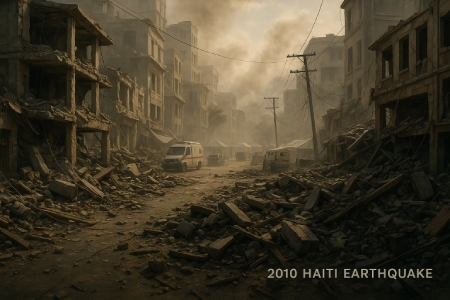
On the 12th of January 2010, a magnitude 7.0 earthquake devastated Port-au-Prince and its surroundings north of Port-au-Prince, killing over 220,000 people, with almost all infrastructure destroyed. The disaster laid bare centuries-long systemic weaknesses in building codes, urban planning, and emergency management. International humanitarian operations stepped in on an unprecedented scale, and consequently defined new philosophies on disaster relief in poor regions. Economically speaking, livelihoods were destroyed, national development slowed, and with these came a long-term reconstruction agenda. Social displacement and housing insecurity resulted in population shifts and increased exposure to future hazards. Politically, the earthquake gave more credibility to critiques of governance and spoke to sustainable urban development. Haiti's experience has further proven how these natural disasters may aggravate inequality while simultaneously initiating international cooperation and policy development.
When the Earth Rewrites History
Natural disasters have altered the flow of human history time and time again, exposing the weaknesses of society, altering societies, and birth new ideas in governance, science, and urban planning. Volcanoes like Mount Vesuvius and Tambora or earthquakes like those in Lisbon, San Francisco, and Haiti forever changed human civilization. Beyond the immediate destruction of property and life, these disasters also influenced changes in migration routes, economies, political setups, and modes of artistic expression. However, not all were mere acts of destruction. They also exhibited resilience and strength of societies, pushing them towards adaptation and a stronger collective consciousness. Through the study of these great disasters, one comes to realize the heavy interplay of nature with human fate and, consequently, how nature-ingrained influences have steered civilization along certain paths through all ages.